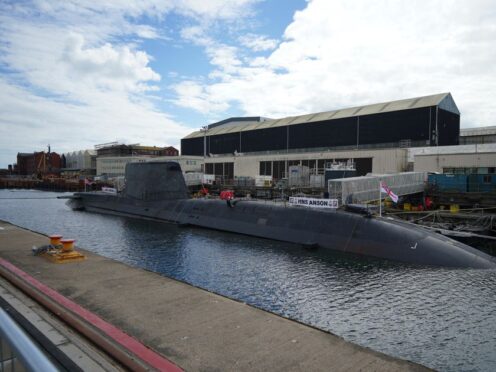
The Government should have set out plans for the future of Britain’s nuclear industry “years ago”, the minister in charge of the sector has said.
The Prime Minister is due to declare a “critical national endeavour” to secure the nuclear industry’s future on a visit to Barrow-in-Furness on Monday.
Number 10 hopes the money will create more than 8,000 career opportunities to help the sector fill 40,000 new roles by the end of the decade.

But speaking to Times Radio earlier on Monday, nuclear minister Andrew Bowie, whose party has been in power since 2010, acknowledged plans for the industry were long overdue.
He said: “I make no bones about it, we should have done this years ago. We are running to catch up.
“But we have just this year delivered our civil nuclear road map, we have announced our intention to build a third gigawatt project, we are investing £350 million in new nuclear power to ease Vladimir Putin out of the nuclear fuels market, we are actually committed to delivering small modular reactors through our competition which will conclude this year.
“But of course this should have been done years ago, which is why we are having to take the action in the way that we are right now.”

Firms including BAE Systems, Rolls-Royce, EDF and Babcock are partnering with the Government to invest around £763 million in skills, jobs and education for the defence and civil nuclear industries.
Rishi Sunak is also set to announce a new fund backed by £20 million of public money to support growth in Barrow-in-Furness, the Cumbrian town that is home to Britain’s nuclear submarine programme.
He will commit to a further £180 million a year over the next decade, which Downing Street says would provide grants to local organisations and improvements to transport and health outcomes in the area.
Ahead of his visit to Barrow-in-Furness, Mr Sunak said: “Safeguarding the future of our nuclear deterrent and nuclear energy industry is a critical national endeavour.

“In a more dangerous and contested world, the UK’s continuous at-sea nuclear deterrent is more vital than ever. And nuclear delivers cheaper, cleaner home-grown energy for consumers.
“That’s why we are investing in Barrow, the home of UK submarines, and in the jobs and skills of the future in the thriving British nuclear industry.
“Today we usher in the next generation of our nuclear enterprise, which will keep us safe, keep our energy secure, and keep our bills down for good.”
The Defence Nuclear Enterprise Command Paper, which the Government says will set out for the first time the full breadth of activity aimed at sustaining and modernising Britain’s continuous at-sea nuclear deterrent, will also be laid in Parliament on Monday.
The announcement follows weeks of criticism over the Government’s resistance to calls for an increase in defence spending amid concerns about the global risk posed by countries like Russia and China.

In a visible sign of unease within the Tory ranks, Foreign Office minister Anne-Marie Trevelyan and security minister Tom Tugendhat earlier this month said a “much greater pace” of investment was needed, while Defence Secretary Grant Shapps called for military spending to rise to 3% of GDP.
Mr Sunak has said the Government has already announced the largest sustained increase in defence spending since the Cold War and “recently topped up with billions of pounds to strengthen our nuclear enterprise and rebuild stockpiles”.
John Healey, Labour’s shadow defence secretary, welcomed the Government’s commitment but said Labour had “long argued” for ministers to secure jobs in Barrow and that Britain would be “better defended” under his party.
But SNP defence spokesperson Martin Docherty-Hughes MP condemned the plans to “waste another £200 million” on nuclear and accused both main parties of focusing on “the wrong priorities”.
“It is grotesque to throw another £200 million down the drain when the Tories and Labour Party both claim there is no money to improve our NHS, to help families with the cost of living or to properly invest in our green energy future,” he said.

Enjoy the convenience of having The Sunday Post delivered as a digital ePaper straight to your smartphone, tablet or computer.
Subscribe for only £5.49 a month and enjoy all the benefits of the printed paper as a digital replica.
Subscribe